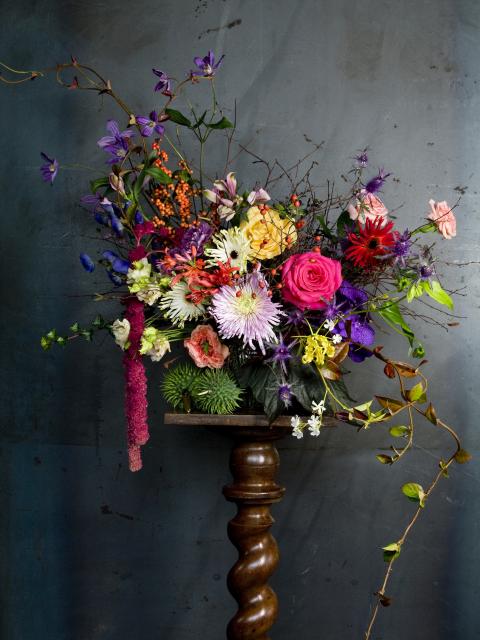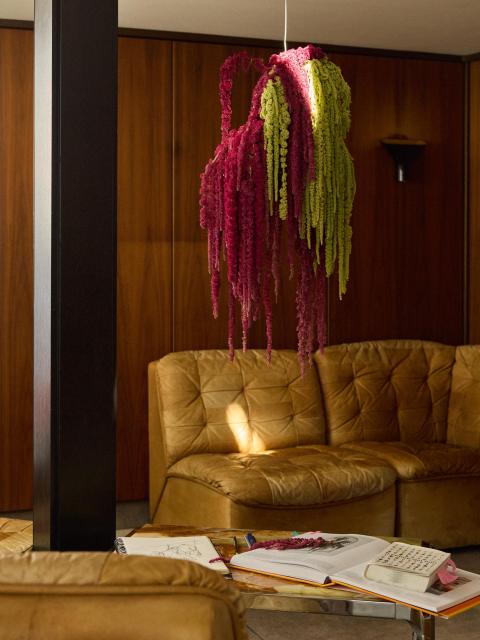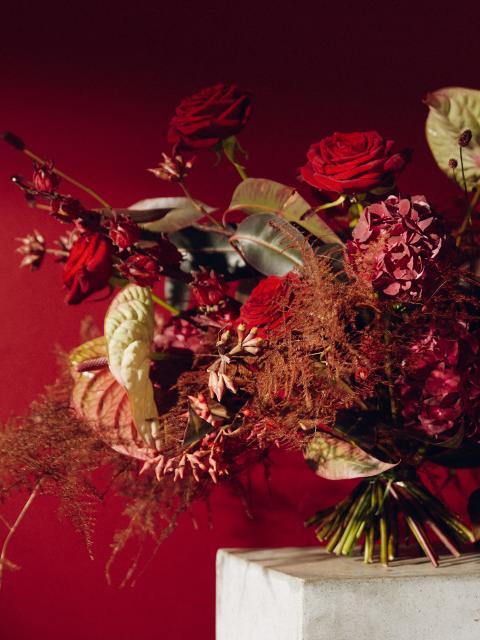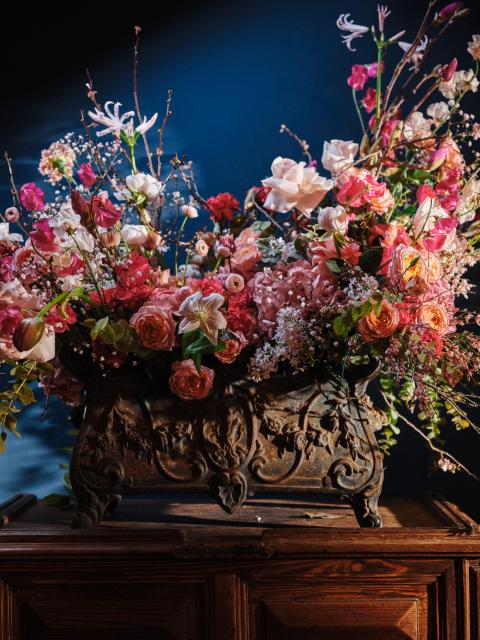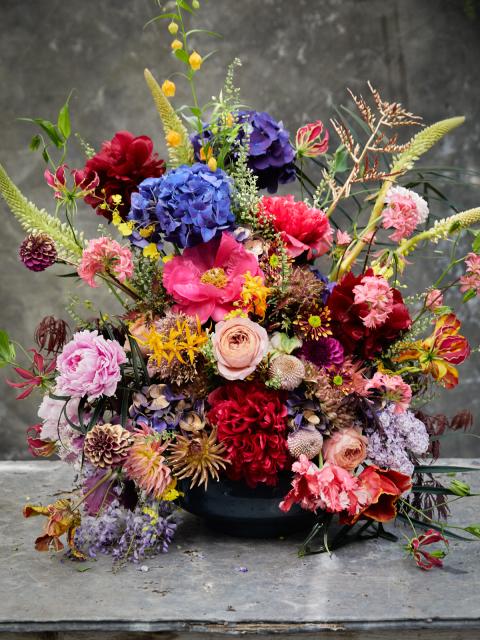Flowers as a material
‘I was at a school where we were allowed and enabled to experiment. I gradually started to think about flowers as a material. If you approach them in the way that you would approach wood, metal or ceramics, you quickly see all the applications and ways of using flowers. I was given enough opportunities to create a range of applications, and in conjunction with resin - another material I was accustomed to working with - I thought I’d found the ideal combination. In the end I started injecting flowers with bacteria in order to transform them into aged material, in order then to capture them in resin. I don’t see flowers as something that characterises me as an artist. For me they are simply a tool, a material, in order to emphasise what I am thinking about. In a subsequent project it might well be something completely different.’
Success through recognition
Marcin Rusak's works have been well-received. He exhibited his creations at a variety of international fairs. ‘I think I was very lucky. When people were able to view, see and touch my work in the flesh, they really appreciated the depth, both literally and metaphorically. I think that the success of the Flora collection amongst others lies in the combination of aesthetics and reality. People recognise that there is both an ephemeral and a living element in my work. That tension makes people enthusiastic.’
"People recognise that there is both an ephemeral and a living element in my work. That tension makes people enthusiastic."

From bin to pedestal
‘I use a lot of leftover flowers: flowers that would otherwise be thrown away by florists or big arrangers. At first I went to markets and searched through the waste for usable flowers. But that was too much of a challenge, particularly on bitter winter mornings. In the end I established working relationships with florists. I can visit them and find flowers in the shop that would otherwise be thrown away: flowers that are left over from major projects, or are simply no longer saleable. It’s remarkable to create a temporary or permanent artwork with a natural product which would not generally be on display for more than two weeks. Usually people throw away a bunch of flowers when it starts to discolour, but in my work that really marks the start of the most beautiful part of the process. Those 50 shades of beige do more for me than a single fantastic display of colour. Those almost unrecognisable flowers heading into decay are my favourite. Virtually no flower at the peak of its flowering can compete with that.’
Artistic phases
‘My work started as a reaction to today’s consumer society. To the fact that we have quite a few things in our lives that we feel are ‘important’, but that we don’t care about very much at the end of the day. With many things that we buy and ultimately dispose of, we don’t care what happens to them in the end or how they’re dealt with. By giving an object a time limit, you enable the person concerned to think about the value of the time still to be spent. Take a vase as an example. If a vase has a collector’s value but cannot be passed on to a subsequent generation, you establish a special bond with it. The things that I make each have their own lifespan. That can range from half a year to a decade, completely dependent on how much care we exercise in handling the objects and the external factors that we allow to influence them. Heat or moisture can cause my works to become mouldy or melt, but if you place them indoors with not too much direct sunlight you can enjoy them for much longer. Some of my works would decay in just a couple months in the garden.’
"Some of my works would decay in just a couple months in the garden."
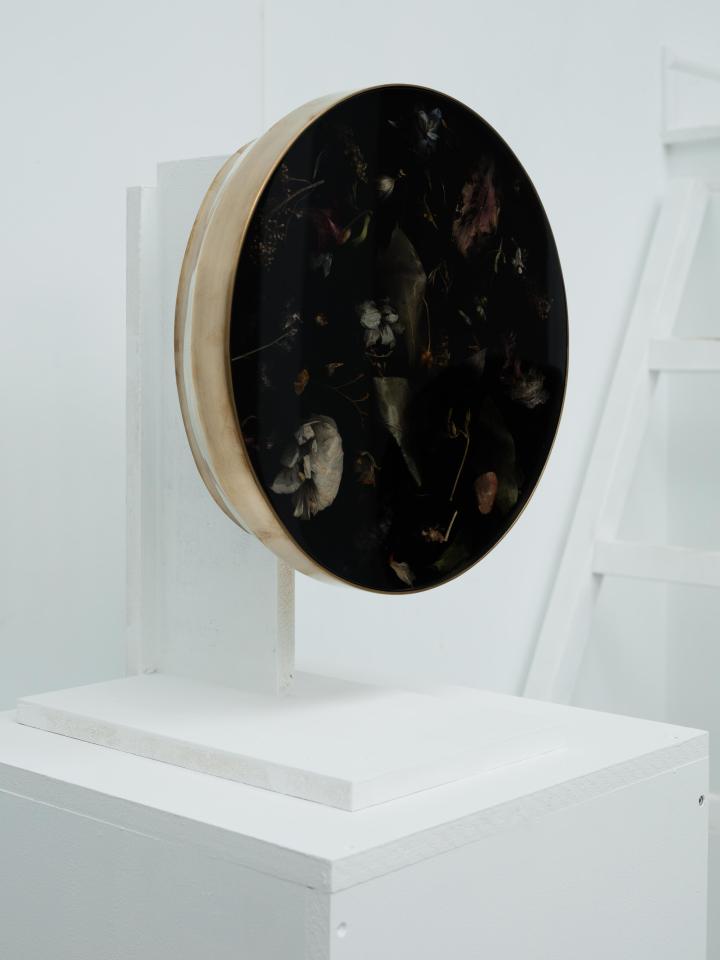
City hopper
'I’m originally Polish - that’s where I grew up and became an adult. At the age of 23 I moved to the Netherlands to study. After graduating I went to London because the environment there is so interesting for my professional field: there are lots of festivals, events, galleries, fairs. I travel constantly. London, Rotterdam and Warsaw are the three places from which I set out. Which is lucky, because if I were to live and work in one place for too long I’d feel the need to move. At the moment I’m finishing two installations in Rotterdam: incredibly heavy dining tables, completely black. One is going to London, the other to New York. I’ve been working on them for the past six months. The starting point is to find the right flowers, and quickly thereafter to create the metal structure. When it all comes together it will hopefully be an exciting creation.’
Growing up in a greenhouse
‘I grew up in greenhouses. My family has a long history as flower growers, from well before 1900 to my birth in 1987. It was a natural environment for me in which to play and build amongst abandoned buildings and orangeries. It was normal, I didn’t know any different. When I was growing up, I particularly saw decay: of buildings, but also the flowers that were left behind. Only when I got to art school did I start looking at things from a decorative perspective. Often beautifying things goes hand-in-hand with nature. I think that’s what brought me back to working with flowers. The circle of life that took me more than twenty years.’
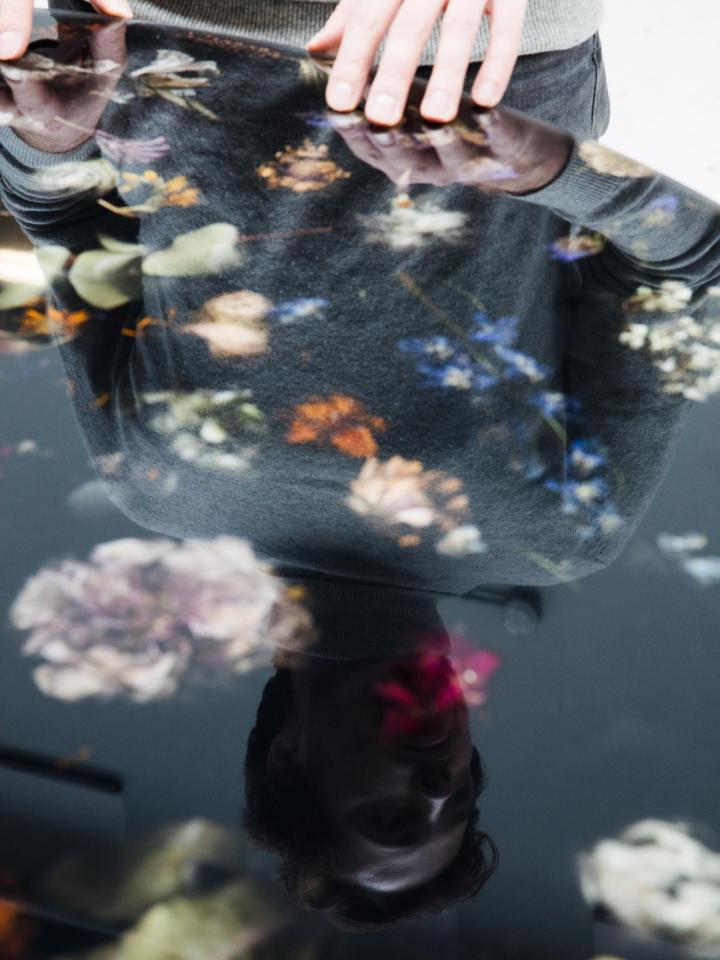
Collaboration & signature
‘When I started I did everything myself, from fetching flowers and the admin through to taking photographs for my website. Luckily I’m now able to call upon the right people and rely on their expertise. Sometimes I work on a project fairly solo, and at other times I collaborate with a partner. My work is pretty recognisable. I like minimalist stark lines and putting the materials themselves centre stage. The best way to display an object depends on the work. I’m always delighted when clients send photographs of the location where a creation is going to be placed. Obviously a particularly beautiful home is the ideal spot, but ultimately it’s about how natural light manages to find its way through the work. That shows off all the shadows and the hidden layers. So I would say that any spot with natural light is the ideal place for a Marcin Rusak.’
MORE ABOUT MARCIN
Did the interview make you curious about Marcin Rusak and his work? Check the video more about Marcin.







